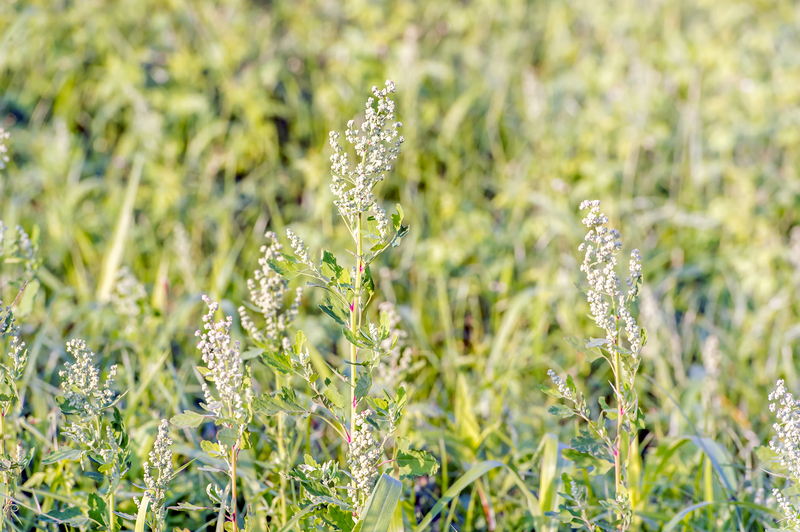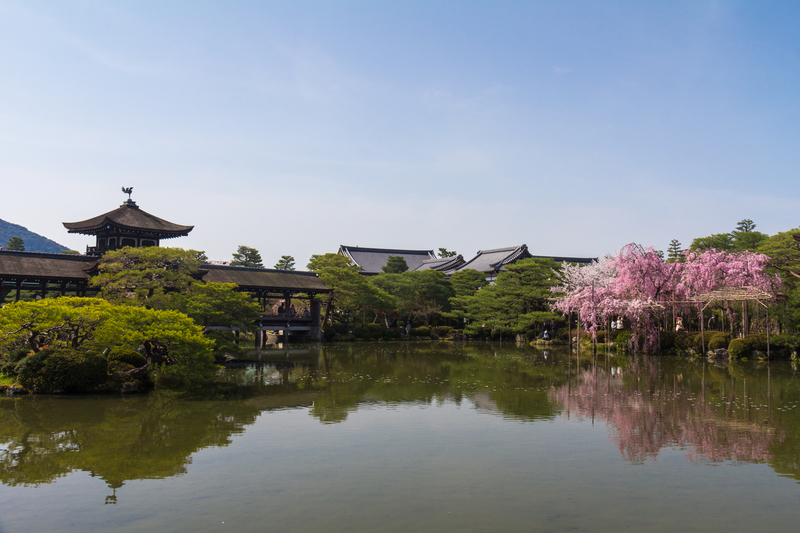Container gardening: growing greenery in small spaces
Posted on 08/06/2025
Container Gardening: Growing Greenery in Small Spaces
If you've ever dreamed of transforming a petite balcony, patio, or windowsill into a lush green retreat, container gardening can make this dream a reality. As urban living spaces shrink and more people strive for a harmonious connection with nature, growing plants in containers has become an accessible, rewarding solution for city dwellers and homeowners alike. Not only does it maximize the available area, but it's also a versatile, creative, and sustainable way to cultivate herbs, flowers, vegetables, and more.

What is Container Gardening?
Container gardening refers to growing plants exclusively in pots, tubs, troughs, boxes, or other containers, rather than directly in the ground. This method allows you to create a flourishing garden in even the smallest spaces such as balconies, rooftops, courtyards, or alongside your doorstep. Whether you want a pocket of paradise on your windowsill or an edible oasis for healthy homegrown produce, container gardening adapts beautifully to your needs.
Why Choose Container Gardening?
- Space-saving: Ideal for apartments, condos, or any home with limited or no yard space.
- Mobility: Easily move containers to catch the sun, shade, or shelter plants from inclement weather.
- Versatility: Grow a diverse range of plants, from vegetables to tropicals, flowers, succulents, and even dwarf fruit trees.
- Aesthetic appeal: Elevate your decor with beautiful, unique arrangements and creative container choices.
- Accessibility: A great option for people with mobility challenges, as containers can be raised or grouped for easy reach.
Getting Started: Choosing the Right Containers
Starting your own container garden is both exciting and straightforward. The first essential step is selecting containers suited to your plant choices and available space.
Types of Containers
- Terracotta pots: Classic and porous, perfect for plants that prefer drier conditions.
- Plastic and resin containers: Lightweight and moisture-retentive, available in many colors and sizes.
- Ceramic and glazed pots: Decoratively stunning, retaining more moisture than terracotta but may be heavy.
- Wooden boxes and barrels: Rustic charm and excellent for bigger vegetable crops or groups of flowers.
- Metal tubs and troughs: Industrial chic, durable, but may heat up in strong sun--line with bubble-wrap for root protection.
- Recycled materials: Let your creativity shine by reusing old buckets, crates, or even colanders and boots!
Key considerations:
- Drainage: Ensure containers have holes to prevent waterlogging.
- Size: Larger containers offer more room for roots, retain moisture longer, and need less frequent watering.
- Material: Choose materials based on your climate and aesthetic preference.
Essential Elements for Successful Container Gardens
To flourish, container plants need a few fundamental ingredients. Get these basics right, and your greenery will reward you with vigorous growth and vibrant color.
1. Soil and Growing Medium
- Use quality potting mix: Avoid using ordinary garden soil--it's typically too dense and may harbor pests or diseases. Commercial potting mixes are formulated for improved drainage, aeration, and nutrient retention.
- Amend with compost: Mix in well-rotted compost for added nutrition and moisture retention.
- Add perlite or sand: For plants preferring free drainage (like succulents), blend in perlite or coarse sand.
2. Drainage and Watering
Proper drainage is essential in container-growing. Excess water must escape to prevent root rot. Place a broken pot shard, pebble, or mesh over the drainage hole to keep the soil in but let water pass.
- Monitor moisture: Stick your finger an inch into the soil. Water when it feels dry at that depth.
- Consistent watering: Containers dry out faster than garden beds, especially in hot weather. Be diligent but avoid over-watering.
3. Feeding and Fertilizing
- Regular feeding: Since container garden plants rely solely on the nutrients you provide, use a balanced liquid fertilizer every 2-4 weeks during the growing season.
- Slow-release fertilizers: Mix granules into the soil at planting for a steady supply of nutrients.
4. Light and Placement
- Assess your light: Before selecting plants, determine whether your space gets full sun, part sun, or shade.
- Move for best results: One of the biggest advantages of container gardening is the ability to shift containers as needed for optimal sunlight and temperature.
- Grow lights: If indoor light is scarce, supplement with LED grow lights for year-round greenery.
Choosing Right Plants for Small Space Gardening
Selecting the best plants for your potted garden depends on your environment, preferences, and goals. Fortunately, a vast array of species flourish in containers.
Best Edible Plants for Containers
- Herbs: Basil, chives, mint (keep in its own pot!), thyme, and parsley thrive on windowsills.
- Salad greens: Lettuces, spinach, and arugula grow quickly and harvest repeatedly in shallow pots.
- Tomatoes and peppers: Choose compact or dwarf varieties for best results.
- Root crops: Radishes, carrots, and beets do well in deep containers with loose soil.
- Strawberries: Perfect for hanging baskets and patio tubs.
- Dwarf fruit trees: Try figs, lemons, or apples bred for containers on sunny patios.
Ornamental Plants and Flowers
- Annuals: Petunias, marigolds, pansies, and geraniums provide months of color.
- Bulbs: Daffodils, tulips, hyacinths, and crocuses sparkle in spring pots.
- Perennials: Hostas, heucheras, lavender, and dwarf grasses return each year with minimal care.
- Vines: Sweet peas, morning glories, or nasturtium add height and whimsy by climbing up trellises or railings.
Novelty and Structure
- Succulents: Aloe, echeveria, jade, and sedum are stylish, sculptural, and low-maintenance.
- Miniature conifers: Give year-round structure and a touch of the forest to patios and decks.
- Bonsai and topiary: Shapeable, elegant options for a unique container statement.
Design Tips for Stunning Container Gardens
The beauty of growing plants in small spaces is the endless opportunity for creativity. A simple, well-placed pot can carry visual impact, while a grouping of containers creates a dynamic display. Here are a few trusted design principles:
Thriller, Filler, Spiller Formula
- Thriller: Choose a tall, focal-point plant like a grass or an upright flower.
- Filler: Add mounding, mid-height plants to fill space and provide contrast.
- Spiller: Let trailing plants cascade over the container's edge for leafy lushness.
Example: Combine purple fountain grass (thriller), marigolds (filler), and trailing ivy or sweet potato vine (spiller) in a large tub for a showstopping effect.
Grouping and Layering
- Cluster containers: Arrange pots of varying heights, shapes, and colors for visual interest.
- Stagger heights: Use plant stands, shelves, or hang baskets to utilize vertical space.
- Color harmony: Limit your palette or create bold contrasts--both approaches can be equally striking.
Creative Solutions for Ultra-Small Spaces
Vertical Container Gardening
When every inch counts, think upwards! Vertical gardening solutions include:
- Wall planters and pockets for herbs, greens, and decorative plants.
- Hanging baskets that dangle from railings, ceilings, or attached hooks.
- Shelves and tiered stands to display groups of pots and maximize sunlight exposure.
- Trellises and obelisks for climbers like beans, peas, and flowering vines.
Windowsills and Railings
- Railing planters: Specially designed to fit over balcony or porch railings.
- Window boxes: Perfect for culinary herbs, flowers, and even cherry tomatoes.
Pro Tip:
If floor space is too tight, utilize walls, ledges, and corners. Combining diverse heights, colors, and shapes will help make the most of your limited area and give your container garden a vibrant, layered look.
Maintenance and Troubleshooting
Once your compact, potted garden is thriving, a little regular care ensures lasting beauty and productivity.
Essential Maintenance Tasks
- Water wisely: Check often, especially in summer. Grouping containers reduces evaporation.
- Pest checks: Inspect leaves and soil regularly for aphids, gnats, or mold.
- Deadhead and prune: Remove faded flowers and yellowing leaves to encourage fresh growth.
- Replenish soil: Top off pots with fresh compost or repot with new mix when plants outgrow their containers.
Common Problems and Solutions
- Wilting, yellowing leaves: Likely from over or underwatering. Check soil moisture and adjust.
- Pests: Treat with insecticidal soap for most insects, or wipe leaves with diluted neem oil.
- Nutrient deficiencies: Feed regularly and repot when necessary.
Sustainability and Eco-Friendly Practices
Container gardening is naturally sustainable--using less water, fertilizer, and often repurposing materials. To boost your eco-credentials:
- Upcycle containers: Reuse household items as planters and avoid buying new plastic pots.
- Collect rainwater: Use a small barrel or even a bucket to water your plants naturally.
- Choose organic seed and fertilizer: Healthier for both plants and the planet.
- Compost: Add kitchen scraps to an indoor compost bin and recycle nutritious matter back to your container garden.

Inspiration From the Container Gardening Community
Across the globe, passionate urban gardeners are turning the smallest spaces into vibrant retreats. Consider joining online forums, local gardening groups, or social media communities to exchange tips, ideas, and inspiration. You'll discover endless ways to use small-space gardening for creativity, connection, and well-being.
Conclusion: Transform Your Small Space Into a Green Oasis
With container gardening, limited space doesn't mean limited possibilities. Whether you're growing fresh food on your balcony, cultivating flowers on your porch, or creating a lush corner in your kitchen, growing greenery in small places offers relaxation, beauty, and a touch of self-sufficiency. Start with one container, experiment with plants that excite you, and let your mini-garden reflect your personality and passion. The rewards--lush foliage, fragrant herbs, colorful blooms, and fresh harvests--are right at your fingertips, no matter the size of your space. Happy gardening!

